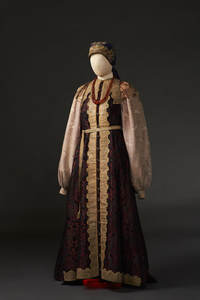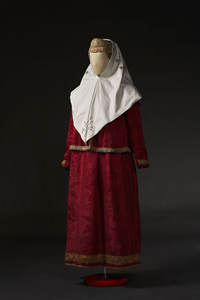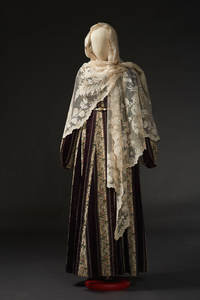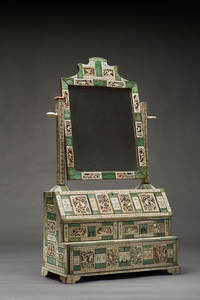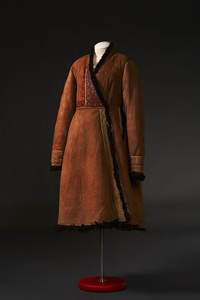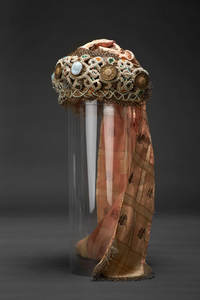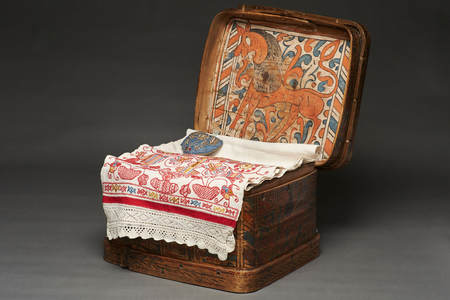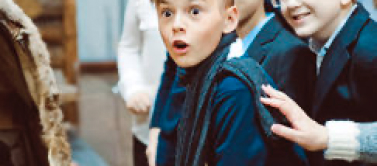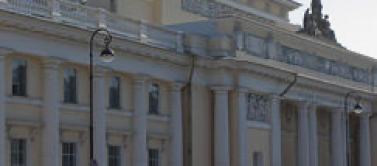Russians. Late 19th – early 20th century
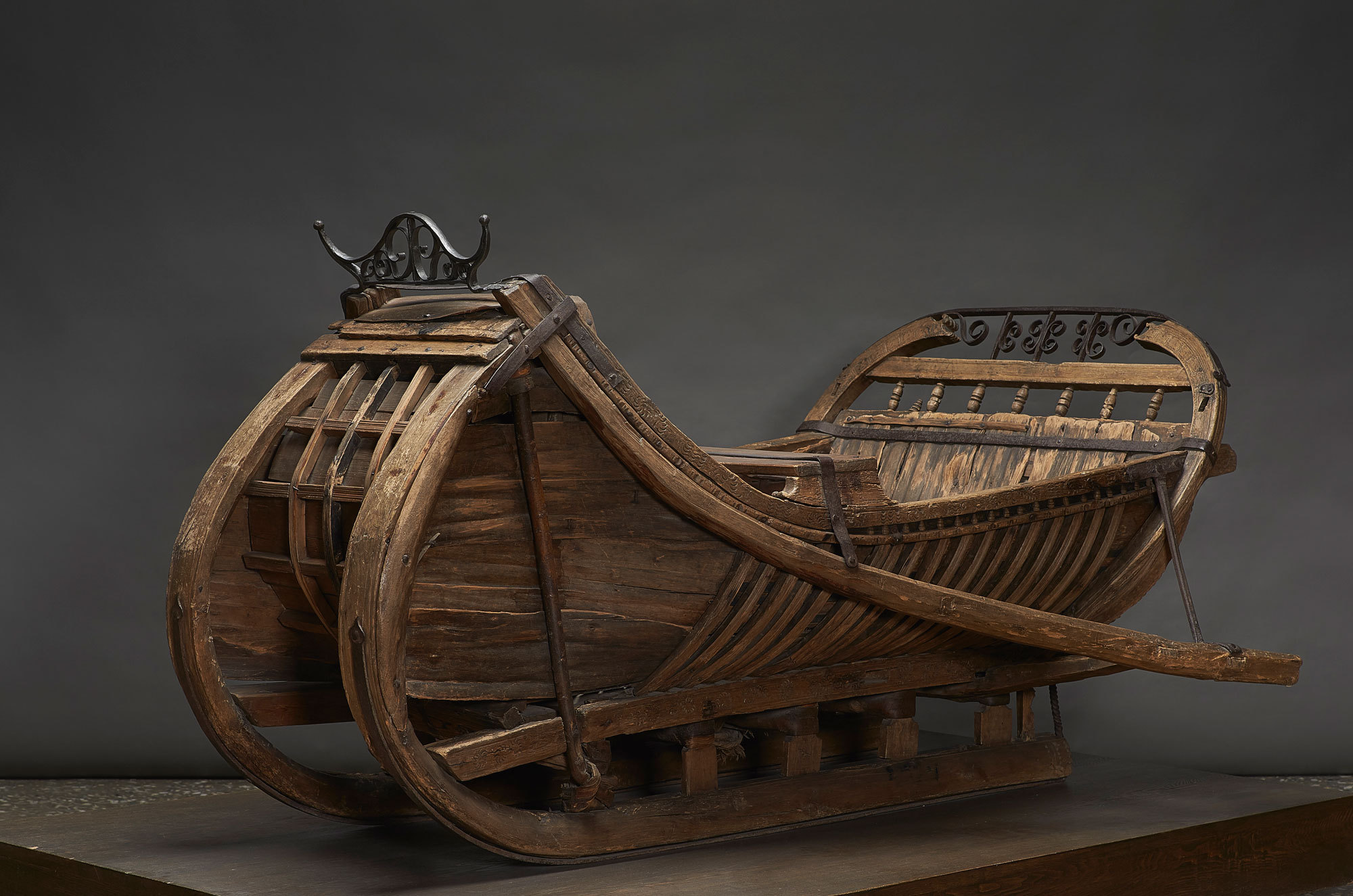
An exposition on the ethnography of the Russians, the largest East Slavic people in the territory of the former Russian Empire, has been set up in the Museum’s rooms. How did Russian peasants manage their complex households, growing various agricultural crops, raising domestic animals, building houses and stoves, making household utensils, work implements, and clothes? How did their traditional lifestyle proved by experience of many generations develop over centuries? How did everyday work alternate with merry holidays in the harmonious rhythm of peasant life? And why were holidays called “debt to God?” How could a Russian stove serve as a portal to other worlds? Why did they debark a young linden, and who had to knock blocks around? The remarkable collection on the culture of the Russian people is the basis of the exposition, which answers these and many other questions.
The exposition opens with a gallery of photographs of Russian people of different ages and social groups from various provinces, taken in everyday setting. They introduce the visitor to the atmosphere of life in the provincial Russia at the turn of the 20th century.
The introductory section shows the map of settlement and describes the main stages of ethnic history of the Russian people.
Peasant labor
The first room of the exhibition tells about the agricultural activity of Russian peasants – techniques of traditional arable farming, cattle farming, fishing, beekeeping, and processing fiber crops.
Arable farming, the basis of the Russian peasantry’s agriculture, is presented by the full cycle of activities – land cultivation with a wooden plow and harrow, hand sowing from a basket, and crop harvesting. All stages of field work went along with magic and church rites intended to influence the fertility of soil. While it was mostly men who plowed and sowed, grain crop harvesting was in fact totally women’s work.
They reaped by hand throughout the daylight hours. They went to the field with their babies, where elder children looked after them. Related to the hot harvest season were many beliefs and rites, “harvest” songs and incantations. Women put on special chemises, and on the last day they performed the ancient ritual of tying “the Nicholas’ beard.” A woman strapped several unreaped ears of rye with a towel, and then bent them to the ground as if giving back the power taken from the earth by ripe crops. It was the custom to put some bread and salt to under “the beard” to coax St. Nicholas the Wonderworker hoping for a plentiful harvest in the new year. The ritual is reproduced in the scene “Harvest Time.”
Another scene shows various moments of manual processing of flax: breaking hard shives on a wooden brake, beating or primary fiber separation from broken chaffer, and final cleaning of flax tow with a metal brush or comb.
Displayed in the same room are means of transport and harness: a dugout flat-bottom boat, a low wide sledge decorated with carving and a wrought iron pattern, a yoke, a painted shaft bow, and other accessories of traveler’s life. In the foreground we see a flat-bottom boat fully rigged for “jackfishing”; it is gouged out of a whole tree trunk. It is one of archaic techniques of fishing in the shallows after dark. The fisherman lit up the river’s water surface with ignited oakum tied to an iron “torch,” and hit a large fish attracted by the torchlight and spotlighted with an iron-tipped wooden spear.
Crafts and craftsmen
The second room is dedicated to traditional Russian crafts, with the central place given to woodworking. Russia was called a wood country due to its abundant forests. Wood was used to build houses and to make all kinds of work implements, furniture, chests, means of transport, toys, and musical instruments. Bast shoes were made from bast and birch bark; cracked earthenware was wrapped around with birch bark to add strength. Shown on the central display platform are wooden, earthenware, and metal utensils of various shapes for various purposes.
Dyed and pattern printed fabrics were used in Russia from days of old. Rural artisan dyers did manual dying and applied color patterns in special workshops. Homespun fabric was dyed all over in one color in vats with paint. Dipped in such vats were also canvases with patterns covered with wax (“vapa”), which remained uncoated when the wax was removed. This method of pattern application was called “vapleniye.” More often, fabric was decorated using printing boards (repeat patterns) with a relief design. A board covered with ink was placed on the canvas and hit with a wooden hammer (a kind of printing). Otherwise, blue (“indigo dyed”) canvas was laid on the repeat pattern covered with oil paint and rolled with a wooden roller on the top. To get a multicolor print, the number of boards was to correspond to the number of colors.
Noticeable place is given to metal processing crafts – blacksmithing and foundry. You will see door staples, intricate locks, torch holders, harness bells, and horse doctor’s badges. Most of these household artifacts are splendid examples of Russian metal artwork.
Russian log house
The third room of the display dedicated to dwelling places introduces the visitor to the world of Russian folk architecture and household life. Architectural carving gave inimitable originality to Russian village in Russia’s northern and Volga regions. It decorated the front of the house – vergeboards, cornices, architraves and window shutters, balconies, porches. The ancient images of house carving were expressive and sculpturesque: lions and sirin birds, often with human faces, mermaids-sirens, vine shoots and grape clusters, and rosettes. The decorated parts of peasant houses were strongly tied to their practical function: front vergeboards covered the slots between the log framework and the roof, architraves covered those between the log shell and window frame, and carved boards sheathed the log shell corners. The roof ridge ended in an “okhlupen,” a solid shape of a horse or a bird, which from the days of old had the sacral purpose of guarding the home fire. Not only living spaces were decorated, but also chapels, barns, gates, and wicket doors.
Shown in the same room is the conventional interior of a northern peasant’s house with a God’s corner and arrangement of household articles strictly prescribed by tradition. In the center of the room you may see various peasant utensils: copper samovars and decanters for sbiten hot drink, two-handle wooden ladles, salt cellars, copper flagons for beer and mead, torch holders of various shapes. Many of these objects served as indispensable attributes of family rituals.
Rituals, feasts, and entertainments
The last room of the exposition tells about traditional rites and feasts. Most of them were closely related, from the time of a pagan Rus, to the cycle of farm work, and imbued with care about the future harvest, livestock yield, and multiple and healthy issue in the family. The central scene reproduces the Yule games of guisers. Yule coincided with the winter Sunreturn time and marked the end of the old work year.
A set of rare exhibits illustrates another favorite feast, the “Loose Pancake Week” coinciding with the spring equinox. This merry and loud holiday, where you were expected to “eat until you hiccup, drink until you snort, sing until you scream, and dance until you fall,” marked the oncoming of spring and the beginning of a new work year. The Pancake Week ended in a symbolic farewell to winter.
The scene “Leading a mermaid disguised as a horse” illustrates one of spring/summer rituals. According to an old belief, the image of a mermaid related to the water element, helped to supply reviving moisture to the fields. In the 19th century, many pre-Christian rituals were closely interwoven with the Orthodox church tradition, and mainly lost their sacral meaning turning into mass festivals and entertainments. An indispensable part of a folk feast was field events and games. Presented are accessories of old Russian games – “ball,”, skittles, “dumpling,” “bacha,” homemade balls of various materials, a puppet show, and traditional musical instruments.
Traditional Russian costume
The traditional Russian costume was beautiful and noble in its forms, corresponding to the ethic views of the Russians and their ideas of male and female beauty. Clothes were made of homemade linen, hempen, and woolen fabrics, and of factory-made fabrics like damask silk, tabby, velvet, brocade, brocatelle, cashmere, sateen, or calico.
The peasant costume of the 19th and early 20th century was diversified and had many types and versions. The women’s costume was especially diverse. Usually, researchers distinguish four costume complexes: pinafore clothing set, flapped skirt clothing set, woolen skirt clothing set, and koobilyok clothing set.
The pinafore clothing included a chemise, a pinafore dress, upper garments (arm sleeves, sleeveless jacket, shugai), a kokoshnik for women, a wreath for girls, leather or bast shoes. Apart from northern and central provinces of European Russia, it existed in the middle and lower Volga Land, Ural Land, Siberia, and Altai.
The flapped skirt set consisted of a chemise, a flapped dress, an upper garment (tunic, jacket, kastalan), soroka headdresses for women, headbands for girls, and leather or bast shoes. It was widespread in many provinces south of Moscow. These two costume complexes were distinguished by the number of items composing the costume, manner of wearing the clothes, their color gamut, style of decorations, ornament features, and make-up details.
The costume with a woolen skirt comprising also a chemise with a turndown collar, a waistcoat, a sash and a kokoshnik, was known in some villages of Southern Russia (Tula, Kursk, Oryol, and Voronezh Provinces) among the descendants of service men sent from the western regions in the 16th-17th centuries to defend the Russian border from steppe nomads.
The clothing set with a koobilyok, or slim-waisted dress, with a broad-sleeved chemise worn under it, headwear in the form of a cap fixed on the hairdo, and a long thin veil was customary with the Cossack women on the lower reaches of the Don and on the Terek.
The festive costume of girls and young women was richly decorated with embroidery, stripes of figured weaving, lace, ribbons, braid, spangles, flattened metal yarn, and metal thread. Also, a required complement to the costume was a set of decorations comprising earrings, rings, necklaces, metal chains in the northern Russian costume, and gaitan strings – long chest decorations of beads, in the southern Russian one.
A typical feature of the men’s costume was its relative uniformity over the whole territory of settlement of the Russian people. Regional or local differences in it were slight, and showed in the ornament arrangement on the shirt, its color gamut, in the belt braiding technique, and headgear shape. It consisted of a Russian (skewed-collar) shirt with a low stand-up collar (or without it), and with the closure on the left side of the chest. The shirt was usually worn outside not-so-wide trousers and belted. The costume was complemented by a cap felted from sheep wool, and leather boots or bast shoes.
The outer clothing of men and women in winter consisted of a fur coat worn fur inside, and a fur cap, to which women added a headscarf. In summer they wore cloth caftans, homespun coats, aziam coats, and loose overalls.
A feature of traditional Russian costume was that it differentiated people by age, family status, and social status. The clothing helped to easily tell a rich man from a poor man, an unbetrothed girl from a bride, a spinster from a married woman, a lad from a married man, a loner from a man of family, a widow from a soldier’s wife, a shepherd from a miller, a miller from a potter, a potter from a blacksmith etc. Besides, clothing always suited a particular situation or event in the persons’ life. Clothes worn at home on weekdays differed from clothes worn for reaping, haymaking, plowing, or sowing. The Sunday clothes were different from those worn on Easter or Christmas; special “mourning” clothing had to be worn during a funeral or mourning; the bride and the groom stood at the icon stand in the church wearing wedding garments.
Clothing was an attribute in many rites. Especially high semantic load was borne by such clothing items of ancient origin as shirt, flapped skirt, and headgear.
At the turn of the 18th century, the top strata of the Russian society began to switch over to wearing clothes of general European type. This was a result of changes in Russia’s economic, social, and political life and of the decrees of Peter the First of 1700 and 1701 forbidding wearing traditional clothes by city nobility, merchants, officials, and artisans. The traditional costume that had come a long way of development became primarily peasants’ clothing. In large villages located in the vicinity of province and district capitals, in artisan suburbs, Cossack stanitsa villages, traditional clothing gave way to European-style garments already at the turn of the 20th century. In more remote regions like Siberia or southern provinces of European Russia it still existed in the 1930s. In Old Believer villages of Siberia, one could see people wearing traditional clothes as late as in the 1950s.




